
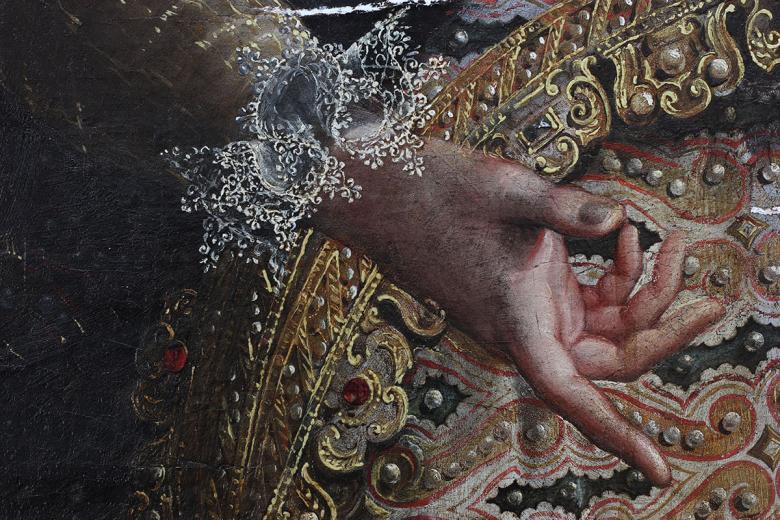
Scientific examination of the paint layer has allowed us to identify the pigments Fontana used in this painting.
Lavinia Fontana’s palette for The Visit of the Queen of Sheba to King Solomon (1599) was far from reserved. She used a great variety of pigments across the composition, often with complex layering structures to achieve dazzling effects. Read on to learn about the various pigments identified by the conservators.
Lead white
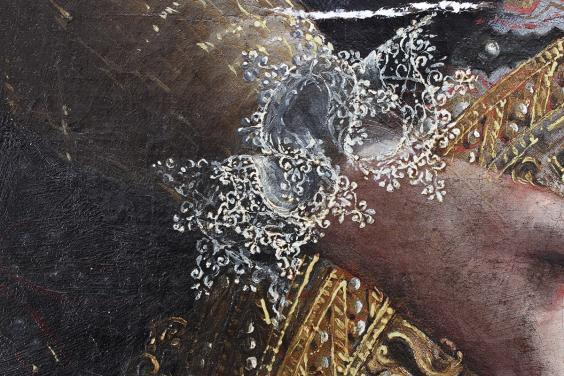
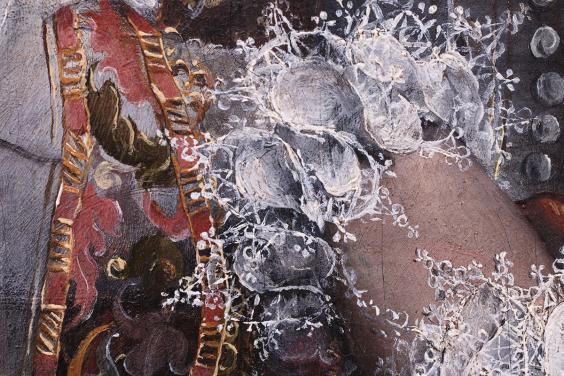
Lead white is the dominant pigment in The Visit of the Queen of Sheba to King Solomon, and the principal white pigment in use by painters of the period. It was traditionally prepared by exposing metallic lead to vinegar and then collecting the lead carbonate powder that forms on the surface of the metal. Lead white pigment is toxic and is not commonly used today. Modern alternatives, such as titanium white are cooler in tone and have different handling properties.
Fontana was expert in her handling of the lead white paint, using it to produce a variety of sculptural effects, especially in her depiction of lacework.
Azurite and malachite
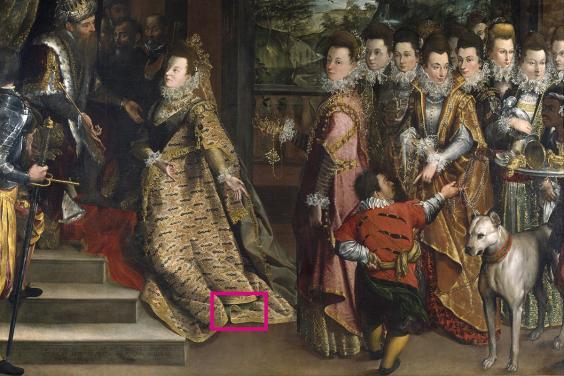

These pigments are ground directly from copper minerals that occur when copper ore is exposed to weathering.
Azurite is the primary blue found in this painting. It is notable that, despite the variety of pigments used by Fontana, she did not use the more expensive pigment ultramarine (lapis lazuli) in this painting.
Malachite has a similar chemical composition to azurite, and both are often found together, but its colour is a deep shade of green. The bright green lining of the Queen's robe is made with a mixture of malachite and yellow ochre (illustrated above).
Smalt


Smalt is an artificial pigment that was made by smelting cobalt oxide together with quartz and potassium carbonate. Initially, the pigment was used within the glass and ceramic industries, but it became popular with oil painters from the mid-fifteenth century.
The pigment was inexpensive, and with some glazing know-how it could be used to imitate or to supplement the more expensive ultramarine blue. Smalt was known to fade and discolour, and it seems Fontana was aware of this: she used the pigment sparingly, in thin glazes, in conjunction with more the reliable pigment azurite. To create depth in the sky, Fontana used smalt glazes over a base of azurite, mixed with lead white.
Vermilion
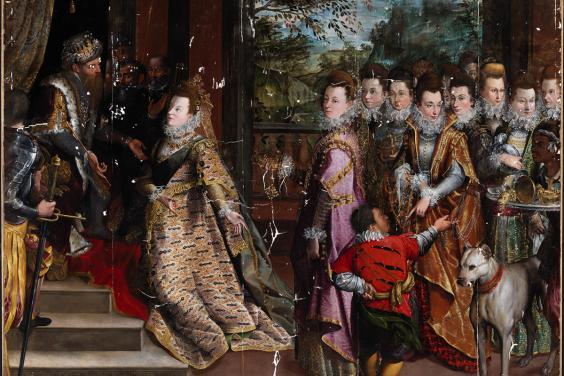

Vermilion is a toxic mercury-sulphide pigment made by grinding the naturally occurring mineral cinnabar. The pigment provided Fontana with an opaque and brilliant warm red with an orange hue. Fontana used vermilion for the rosy flesh tones and - with dramatic effect - for the jacket of the man in red in the foreground.
Lead-tin yellow
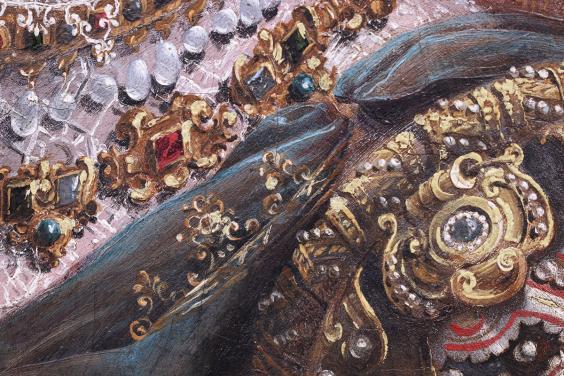
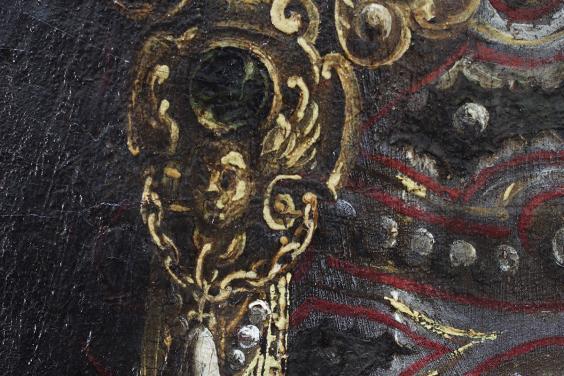
Golden ornament is scattered throughout the painting, and Fontana used lead-tin yellow to depict these glistening surfaces.
A pigment popular in Italian painting between the fifteenth and eighteenth centuries, lead-tin yellow is made by fusing lead and tin oxides at a high temperature. It is a glass-like, opaque, light-yellow material that when ground in oil creates a highly saturated permanent paint. There are two distinct types of lead-tin yellow pigment; only type one has been found in this painting.
Fontana painted all of the gold thread and golden jewellery with varying mixtures of lead white and lead-tin yellow. She was able to use this simple mixture to create a glistening and opulent effect.
Red and yellow lakes
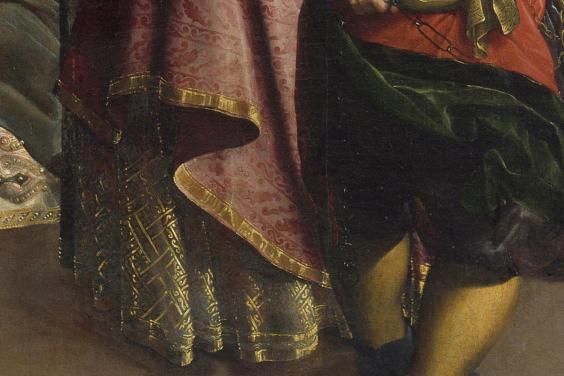

These pigments are not made directly from minerals, but by dying a binder or “mordant” with a natural colourant. They were commonly used in oil painting during this period and were known to be sensitive to light fading.
Red lake colourants were produced from plant and animal sources, such as a root of the madder plant or the shells of the cochineal beetle. Yellow lake dyes were made from plants such as buckthorn and weld.
Fontana used these pigments to mix base colours for the foliage in the painting, but also for glazing layers in the costume to create depth and a sense of translucency.
Bone black
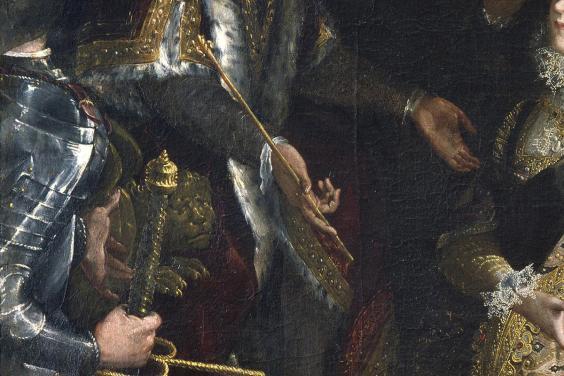
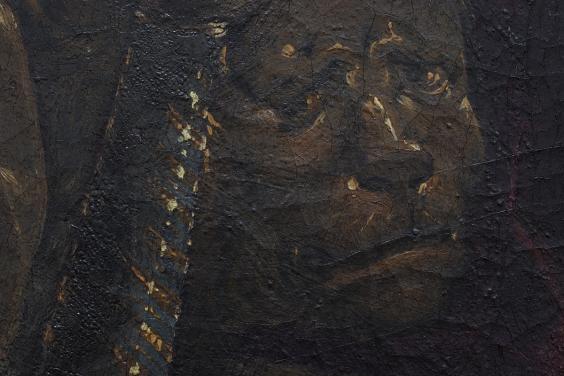
As the name suggests, this black pigment was prepared by charring animal bones. This ancient pigment has been used since pre-historic times and produces an intense, almost blue-tinged, black colour.
This decorative lion head, adorning the armrest of King Solomon's throne, has a base of bone black with lead-tin yellow highlights.
Ochres and umbers
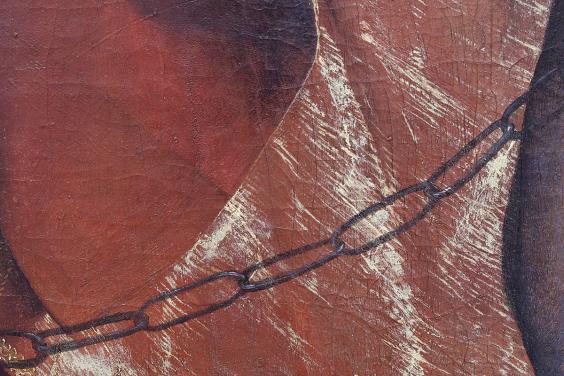

These natural, earth pigments are inexpensive and plentiful, and Fontana used them throughout the painting. A range of earth colours from red and yellow ochre to the green of terre verte to dark brown umber were found in the painting.
Fontana produced the portraits of the men in the upper left of the painting almost exclusively with earth pigments, using azurite for the blue eyes which contrasts with the warm colours of the figures' skin.
One of the ladies-in-waiting is wearing an orange robe decorated with shimmering golden thread. This was painted with a mixture of earth-based yellows and reds and lead-tin yellow highlights.
Funding for the conservation of this artwork was generously provided through a grant from the Bank of America Art Conservation Project.

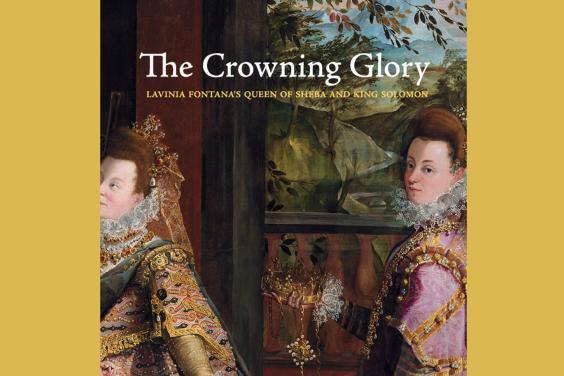
In the Gallery Shop
The Crowning Glory: Lavinia Fontana's Queen of Sheba and King Solomon
This new publication offers insights into the life and work of Lavinia Fontana, a preeminent sixteenth-century Italian painter.
Explore more
-

Fontana's Technique
Lavinia Fontana's masterful depiction of ornate fabrics.
-

Fontana's Changes
Technical imaging reveals Fontana's changes of mind.
-

Conservation treatment of Lavinia Fontana's painting
From stabilisation to retouching to repairing the frame.

